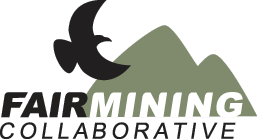Calculator Instructions:
- Fill in all relevant information about your mining project
- Click "Calculate" to get a report on the Impact Area Value of the project


Calculator Instructions:

The Project Footprint (PF) is mainly the legal boundary of the mine including all stockpiles, pits and impoundments, infrastructure, roads and rights of way. It may also include any critical, immediate, peripheral disturbances outside the property boundary that would not exist but for the mine.
You must enter the hectare area using an integer with no decimal fractions.
The Calculator default is 4x, but can be manually overridden. The PIF accounts for any areas that may not feel the direct impact, but are still affected by disturbances that would not exist but for the presence of the mine. This number will include water body (WB) areas which fall within the PIF.
You must enter the hectare area using an integer with no decimal fractions.
The per-hectare value of land in the region/jurisdiction of the mine.
You must enter the hectare area using an integer with no decimal fractions.
Use if calculating for the Greater Impact Area Value factor. Otherwise enter zero (“0”).
You must enter the hectare area using an integer with no decimal fractions.
Use if calculating for the Greater Impact Area Value factor. Otherwise enter zero (“0”).
You must enter the hectare area using an integer with no decimal fractions.
| 1 - Low | 2 - Low/Med | 3 - Medium | 4 - Med/High | 5 - High |
Natural Resources Canada Enter 1 through 5 depending on your mine’s Seismic Zone. (Canada/B.C. only. Use the equivalent for your area)
Water bodies (WB) pertains to the surface area of all water bodies outside the PIF under any form of duress from the mine. Water bodies are critical pathways where mining contaminants more easily enter the food chain and the hydrological cycle.
You must enter the hectare area using an integer with no decimal fractions.
| 1 - Low | 2 - Low/Med | 3 - Medium | 4 - Med/High | 5 - High |
UBC Dept. of Geography Fig.2 - “Continentality Effect: Distance from the Pacific coast” Enter 1 through 5 depending on your mine’s Precipitation Zone. (B.C. only. Use the equivalent for your area).
| 1 - Engineered | 2 - Partial | 3 - None |
For all tailings storage types. Whether Dry-Stack or wet storage (TSF pond), storage requires some kind of bottom liner, or layers of filtration to protect groundwater. These are made from different materials, some man-made, some natural. Enter 1 for an engineered liner with 3 (or more) layers (i.e. 2 geoliners, 1 underliner); enter 2 for two layers (1 geoliner, 1 underliner); enter 3 if the TSF has a single geoliner with no underliner.
Primary TSF or mean TSF dam design method. If this mining project has a TSF, enter the risk factor number for its design in this space. For a good explanation of different TSF dam designs see: ICMM
| 1 - Thickened | 2 - Downstream | 3 - Centerline | 4 - Upstream |
Many mines incorporate one or more of the three main types of dam designs in a single TSF (Downstream, Centreline, Upstream) - from the original design through subsequent raises. If different methods are used in a single TSF Pond, apply the average. Category “1” or “Thickened” tailings may still require a small embankment and are not considered pure “Dry-Stack” (>84% solids by weight)”. If your mine’s TSF is “Dry-Stack” – SKIP THIS SECTION.
Wet tailings are pumped through steel pipes. Most mines rely on standard duplex steel piping which is more prone to corrosion and incrustation, and requires more maintenance than coated pipes.
| 1 - Basalt Coated Steel | 2 - Steel |
Enter 1 if the mine uses any type of improved, coated piping such as fused-cast basalt-coated pipes; enter 2 for conventional steel piping.
Two main types of pumps are used to pump wet tailings: Centrifugal (most common, least expensive, highest maintenance) and Positive Displacement pumps which are less common, mainly because of their higher up-front cost.
| 1 - Positive Displacement | 2 - Centrifugal |
ENTER “1” if the mine uses Positive Displacement pumps, otherwise ENTER “2” if the mine uses conventional Centrifugal pumps.
Each embankment has its own Static Factor of Safety (FoS) – the ratio of the forces of resistance to the shear forces acting on the dam. See the Health, Safety and Reclamation Code
“Guidance Document”.
The FoS is related to the slope of the embankment (H: horizontal – to V: vertical) and should be publicly available from company literature. Skip this section if your mine uses a Dry-Stack. Otherwise, the scale offers 4 FoS options from best to worst: (>1.5 - enter 1) (1.5 - enter 2) (1.3 - <1.5 - enter 3) and (<1.3 - enter 4).
Comminution is the process of crushing and processing ore. The more upstream comminution, the better. However, more stages require more energy, resulting in a higher environmental cost. Where does the bulk of the process occur? Upstream/in-pit, using pre-screening? Or is it spread along a multi-stage process? Enter 1 if the mine uses significant upstream or in-pit High Pressure Grinding Rolls “HPGR”; enter 2 if the mine relies more on “SAG” (Autogenous and/or Semi-Autogenous + Ball Milling); enter 3 if the mine has a 3-4-stage process (Traditional + “Vertimill” or equivalent) with little upstream HPGR and most comminution occurring downstream.
Sizing (aka “screening”) works in conjunction with Comminution. Technological advances allow for high-speed, electronic scanners to sort ore particles through the production chain. Enter 1 the mine uses a full-automated image analysis process; enter 2 if it uses a combination of automated and passive systems; enter 3 if the mine uses no advanced screening/sorting technology.
Valuable minerals are separated from the ore using various methods of Concentration, alone, or in combination: Gravity – Floatation – Optical – Magnetic – Electrostatic - Programmable Logic Controllers (PLCs) and On-Stream Analyzers (OSAs). Enter 1 if the mine uses less passive gravity separation and more PLC/OSA technology; enter 2 for a combination; enter 3 for a mainly gravity-fed concentration system with little or no PLC/OSA or other automation.
The percentage of solid matter versus water in the tailings. Enter 1 for tailings in the 56% -84% solids range; enter 2 for tailings in the 30% - 55% solids range.
De-watering of tailings until they achieve the “dryness” required for Dry-Stacking really begins in the production chain. However, if a Dry-Stack is achieved (>84% Solids by Weight), several technologies are available to maintain the Dry-Stack: “Geotubes” – “Zero Water Flux” - “Oxygen Limiters” to manage water balance. Enter 1 if your mine uses 3 or more methods; enter 2 if the mine uses 2 Dry-Stack methods; enter 3 if it relies on a sole method for Dry-Stacking.
| 1 - High | 2 - Average | 3 - Low | 4 - Poor |
An analysis based on the history of maintenance issues/inspection orders; history, nature, and gravity of regulatory violations; and levels of Indigenous engagement and community relations. There should be enough documentary evidence to support a balanced and objective input based on the company’s record. Enter 1 (high); 2 (average); 3 (low); or 4 (poor).
Parent company or subsidiary; i.e. Imperial Metals, or Mount Polley Mining Corporation.
Name of the mine/mining project.
Closest municipal or regional area, jurisdiction, or traditional Indigenous territory - i.e. Williams Lake B.C.; Cariboo, B.C.; NStQ Territory.
Dam Design refers to the primary TSF or mean-TSF dam design method.
| 1 - Thickened | 2 - Downstream | 3 - Centerline | 4 - Upstream |
Many mines incorporate one or more of the three main types of dam designs in a single TSF (Downstream (entry 2), Centreline (entry 3), Upstream (entry 4)) - from the original design through subsequent raises. If different methods are used in a single TSF Pond, apply the average. Thickened tailings (entry1) may still require a small embankment and are not considered pure Dry-Stack (>84% solids by weight). Skip this section if your mine uses Dry-Stack tailings storage.
Each embankment has its own Static Factor of Safety (FoS)
– the ratio of the forces of resistance to the shear forces
acting on the dam. See the Health, Safety and Reclamation Code
“Guidance Document”.
The FoS is related to the slope of the embankment (H:
horizontal – to V: vertical) and should be easy to obtain
from publicly available mine data. If your mine uses a Dry-Stack you
may SKIP THIS SECTION. Otherwise, this scale presents
4 FoS options from Best to Worst:
>1.5 / 1.5 /
between 1.3 to <1.5 / and
<1.3.